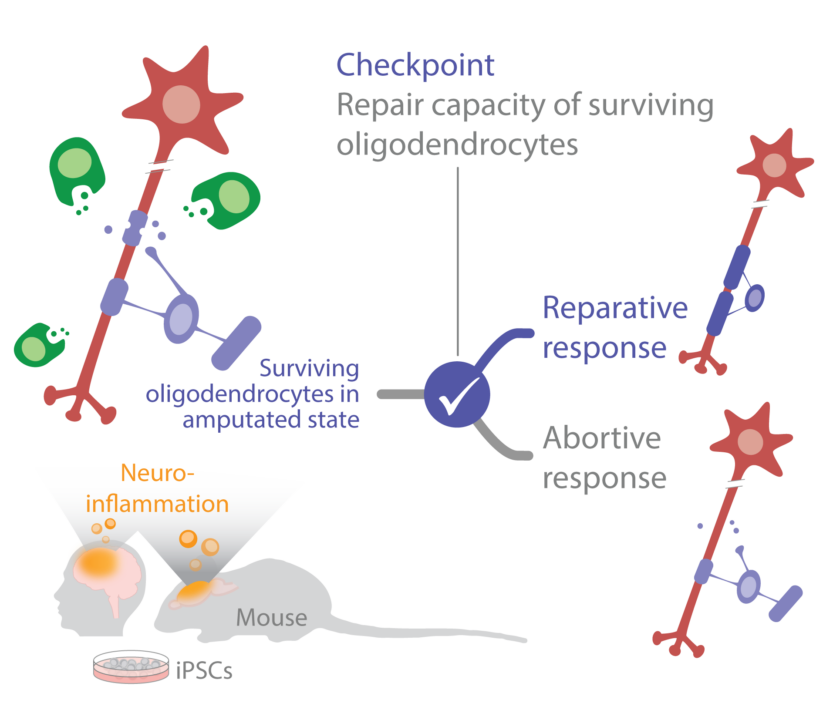Summary
In demyelinating CNS diseases, remyelination is mostly driven by newly differentiating oligodendrocytes (OLs) but often remains insufficient. Our recent work shows that surviving OLs can contribute to myelin repair both in animal models of multiple sclerosis and in patients, although this contribution is often inefficient. We believe that surviving OLs can be recruited to the remyelination process if we target the molecular checkpoints determining their repair capacity in the inflamed CNS. Therefore, we will use bioinformatic analysis to identify candidate checkpoints, modulate them in preclinical MS models where we can track myelin formation by in vivo microscopy and determine their potential to affect human OLs.






